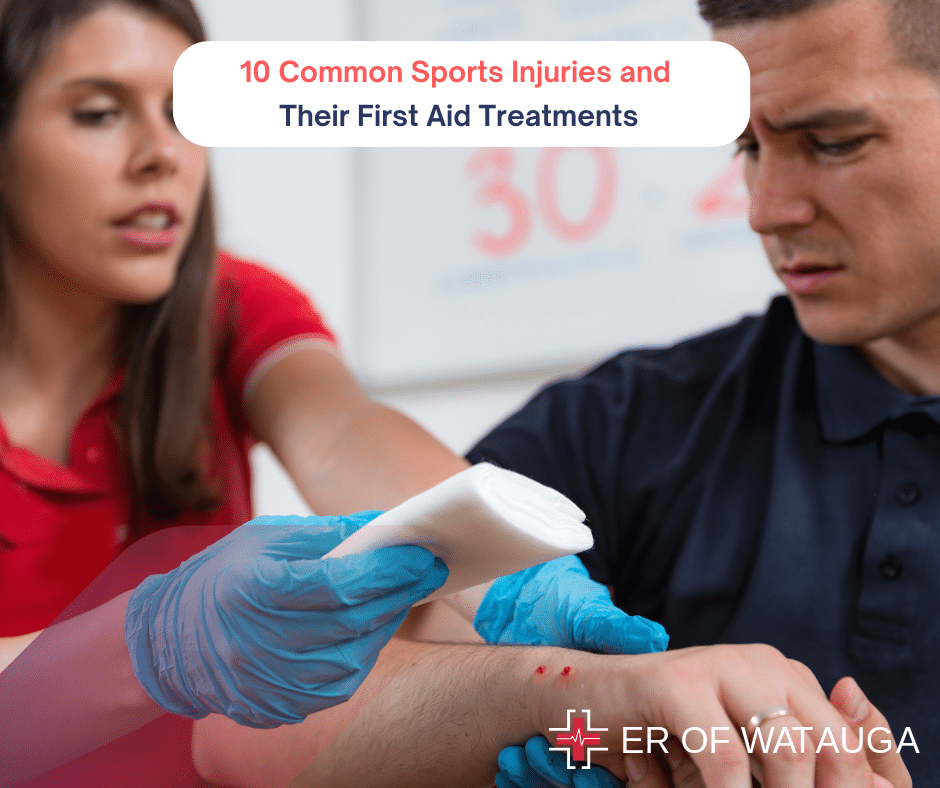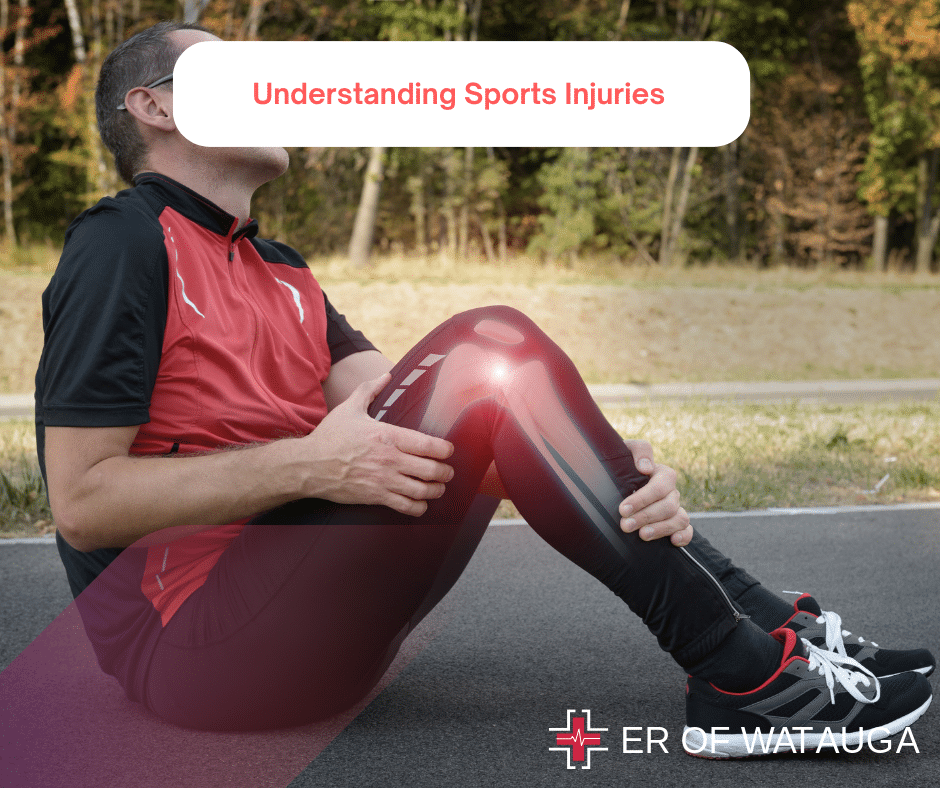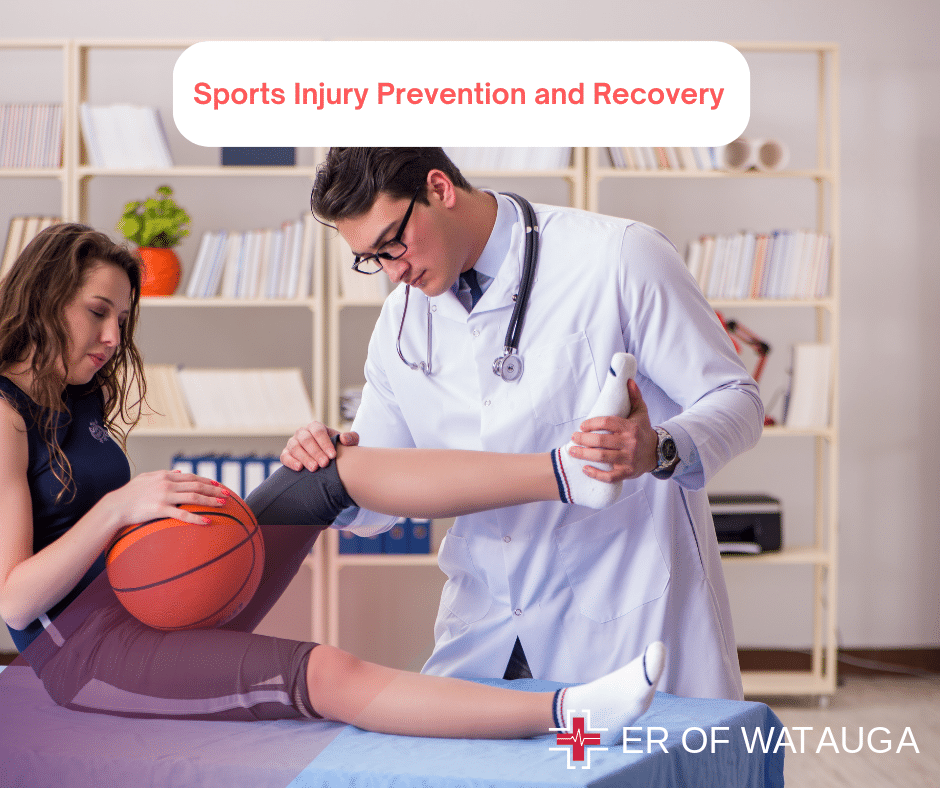One moment you’re in the game, the next you’re sidelined by pain. Sports injuries can strike anyone, from weekend warriors to pro athletes.
These setbacks can derail your fitness goals or end seasons prematurely. But your immediate response can dramatically change the outcome. Appropriate first aid isn’t just about easing pain. It’s about preventing further damage and speeding up recovery.
What should you do when injury strikes? How can you tell if it’s serious?
Let’s explore the 10 most common sports injuries and the critical first-aid steps that could keep you in the game.
Understanding Sports Injuries
Sports injuries are a common occurrence for athletes and active individuals. They can range from minor sprains to severe conditions, requiring long-term recovery. Understanding these injuries is crucial for prevention, effective treatment, and quick recovery.
Types of Sports Injuries
Sports injuries can generally be classified into two main categories:
- Acute sports injuries occur suddenly from a specific traumatic event, such as a fall, collision, or improper landing. Examples include fractures, sprains, and dislocations. These injuries often cause immediate pain, swelling, and loss of function, requiring prompt first aid and, in many cases, emergency medical attention.
- Chronic sports injuries develop over time, often due to repetitive stress on specific body parts. These injuries, such as tendonitis and stress fractures, start as mild discomfort but can worsen without proper treatment and rest. Chronic injuries are common in athletes who don’t allow sufficient recovery time between intense training sessions.
Common Sports Injuries
Sports injuries vary based on the activity and body part affected. Here’s a detailed look at the most common injuries for different body parts:
Ankle Injuries
Sprains: Ankle sprains are common in sports with quick movements, such as basketball, soccer, and volleyball. A sprain occurs when ankle ligaments are overstretched or torn, typically due to a sudden twist or roll of the ankle.
Fractures: A fracture, or break in the bone, can occur from a direct impact or fall, particularly in contact sports like football or gymnastics. Ankle fractures are serious injuries that require prompt medical attention and often immobilization.
First Aid Treatment:
Initial care for sprains and fractures involve the R.I.C.E. method—Rest, Ice, Compression, and Elevation. Severe cases may necessitate immobilization with a splint or cast, and a follow-up with a healthcare provider to assess the injury’s severity and determine the appropriate treatment plan.
Knee Injuries
ACL Tears: The anterior cruciate ligament (ACL) is crucial for stabilizing the knee joint. ACL tears are common in sports that involve sudden stops, jumps, or changes in direction, such as soccer, basketball, and skiing. This injury is often severe, requiring surgical intervention and extensive rehabilitation.
Meniscus Tears: The meniscus is a piece of cartilage in the knee that acts as a cushion between the thigh and shin bones. A meniscus tear can occur during activities that involve twisting the knee or direct impact. Symptoms include pain, swelling, and difficulty moving the knee. Treatment may range from rest and physical therapy to surgical repair, depending on the tear’s severity.
First Aid Treatment:
For both ACL and meniscus injuries, the initial treatment should focus on immobilizing the knee, applying ice to reduce swelling, and elevating the leg. Prompt medical evaluation is necessary to determine the extent of the injury and the appropriate course of treatment.
Head Injuries
Concussions: Concussions are a serious type of traumatic brain injury that occurs when the brain is shaken inside the skull due to a blow to the head. This injury is common in contact sports like football, hockey, and boxing. Symptoms can range from headache and confusion to dizziness and loss of consciousness.
First Aid Treatment:
If a concussion is suspected, the athlete should be removed from play immediately and not return until cleared by a healthcare professional. Rest is essential for recovery, and a gradual return to activity should be closely monitored to prevent further injury.
Shoulder Injuries
Rotator Cuff Tears: The rotator cuff is a group of muscles and tendons that stabilize the shoulder. Tears can occur from repetitive overhead motions common in sports like swimming, tennis, and baseball. Symptoms include shoulder pain, weakness, and difficulty lifting the arm.
Dislocations: The shoulder is highly susceptible to dislocations due to its wide range of motion. A dislocated shoulder occurs when the upper arm bone pops out of the shoulder socket, often due to a fall or direct impact in contact sports like rugby or martial arts.
First Aid Treatment:
In the case of a shoulder dislocation, immediate medical attention is required to realign the joint. For rotator cuff tears, rest, ice, and anti-inflammatory medications are recommended, followed by physical therapy to restore strength and function. Incorporating safety tips to prevent sports-related shoulder injuries into your routine can help reduce the risk of these conditions.
Wrist Injuries
Sprains: Wrist sprains occur when the ligaments in the wrist are overstretched or torn, often due to falls or impacts during activities like gymnastics, volleyball, and basketball.
Fractures: Wrist fractures, on the other hand, involve a break in one or more of the wrist bones and can be caused by a similar mechanism.
Tendinitis: Tendinitis (or tendonitis) is the inflammation of the tendons in the wrist, often resulting from repetitive motions. It’s commonly seen in athletes who perform activities involving repetitive wrist movements, such as tennis or weightlifting.
First Aid Treatment:
Severe cases may require immobilization with a splint or cast and, in some instances, surgical intervention. Early treatment and rehabilitation are crucial for full recovery.
Learn More About Wrist Injury Prevention
Sports Injury Prevention and Recovery
While sports injuries are sometimes unavoidable, many can be prevented with the right strategies. Sports injury prevention involves a combination of proper training, appropriate equipment, and listening to your body’s signals.
- Training and Conditioning: Regular conditioning and strength training help build resilience and reduce the risk of injury. Focus on exercises that enhance flexibility, strength, and endurance, tailored to the specific demands of your sport.
- Warm-Up and Cool-Down: Always start your workouts with a warm-up to prepare your muscles and joints for activity. A proper cool-down, including stretching, helps prevent stiffness and muscle soreness.
- Protective Gear: Wearing the right gear, such as helmets, pads, braces, and appropriate footwear, is essential for minimizing injury risks. Make sure your gear is in good condition and fits properly.
- Listening to Your Body: Pay attention to pain and discomfort. Pushing through pain can lead to chronic injuries. If something doesn’t feel right, rest and seek advice from a healthcare professional.
When injuries do occur, the focus should shift to sports injury recovery. Recovery is a gradual process that often involves rest, rehabilitation, and a carefully managed return to activity.
- Rehabilitation: Working with a physical therapist can help restore strength, flexibility, and function to the injured area. Rehabilitation exercises are designed to target specific muscles and joints, ensuring a full recovery.
- Gradual Return to Activity: Returning to your sport too soon can lead to re-injury. Follow your healthcare provider’s advice on when and how to return to activity. Start with low-impact exercises and gradually increase intensity.
- Long-Term Care: Even after you’ve recovered, continue to incorporate injury prevention strategies into your routine to avoid future problems.
Understanding the nature of common sports injuries and implementing first aid tips for athletes can significantly impact your ability to stay active and healthy. Always remember that sports injury prevention is the best strategy, but when injuries do occur, knowing how to respond effectively can make all the difference in your recovery and return to play.
Get Emergency Care for Sports Injuries
FAQs
What injury is most common in sports?
Sprains are the most common injuries in sports, particularly those involving the ankle.
What is the most painful sports injury?
A fractured bone, especially a compound fracture where the bone breaks through the skin, is often considered one of the most painful sports injuries.
Which sport has the most serious injuries?
American football is known for having the most serious injuries, including concussions, spinal injuries, and fractures, due to its high-impact nature.








